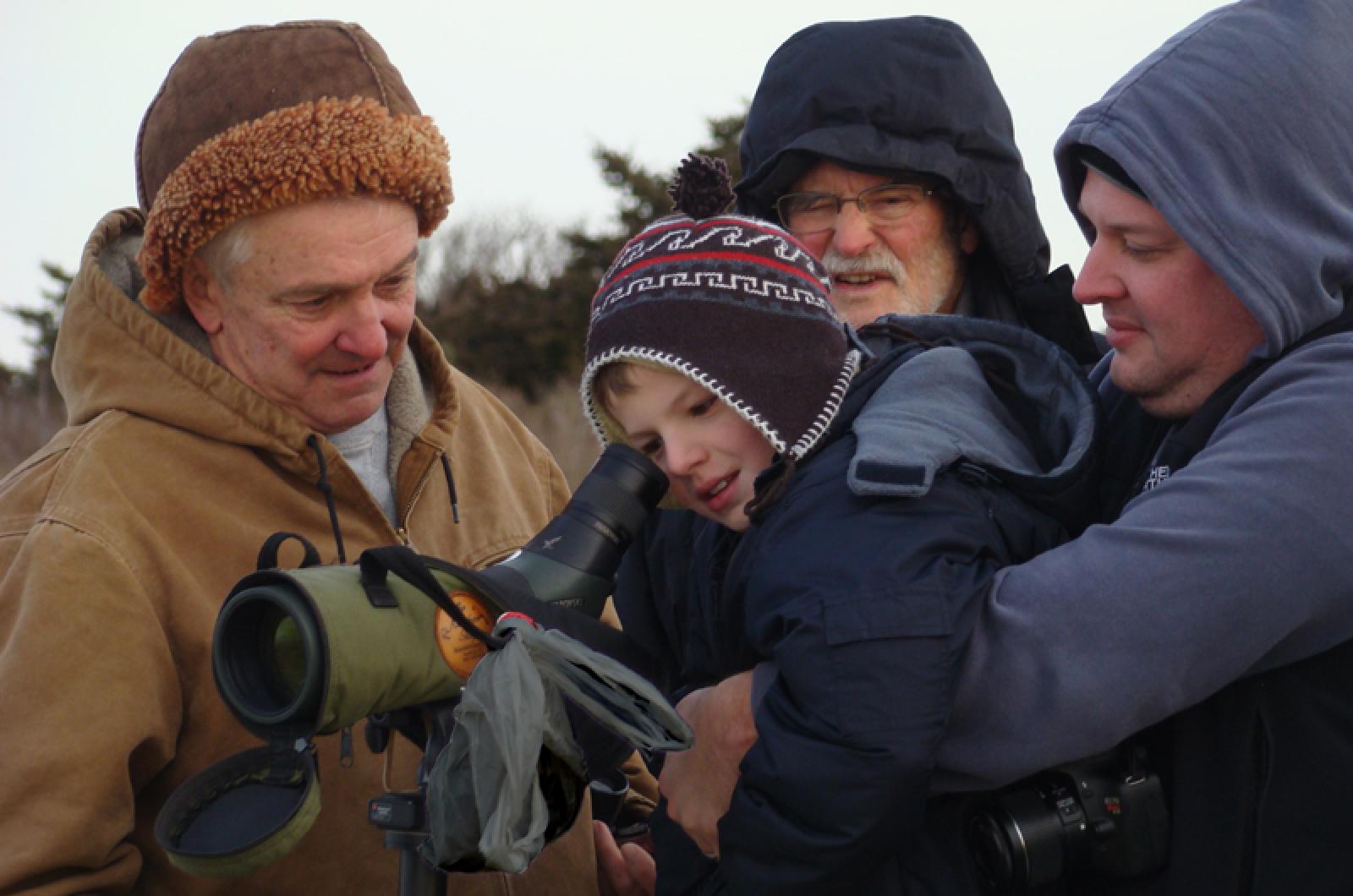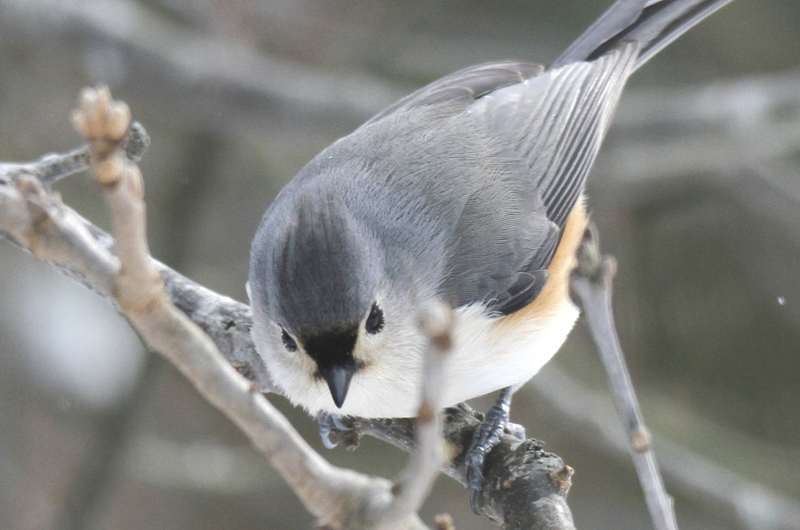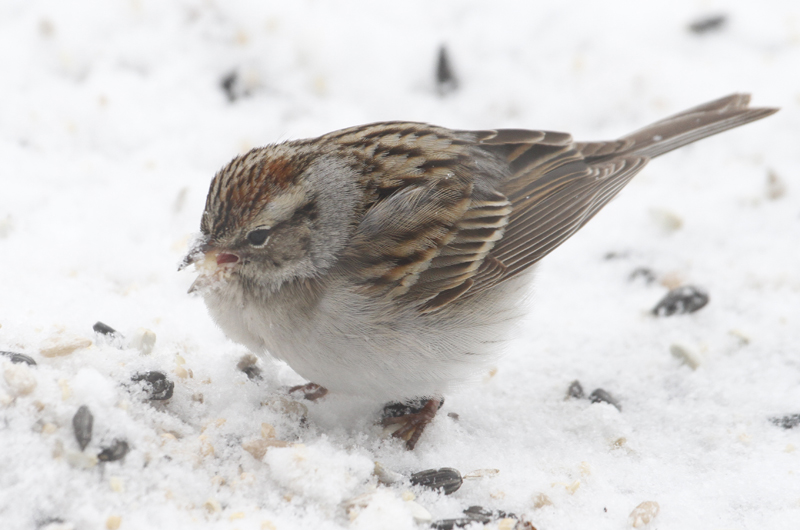The annual Christmas Bird Count was held on Jan. 3. Here are the final results of the count, a day when the temperatures reached a recently unheard of balmy 44 degrees, and without much wind either. Some of us may be looking forward to the return of such weather!
This year’s 94 participants, 65 in the field and 29 watching their feeders, found more birds than we had in recent years. We observed 122 species, the highest number of species since we found a record 130 species in both 2003 and again in 2007. We found 28,789 individual birds, which is the highest number we have observed in the past five years, since we recorded 32,117 in 2009. The tally could have been much higher since each of the 13 teams reported finding almost nothing after 1 p.m., due to coming bad weather, which we are still experiencing. These numbers are still well below the average of approximately 45,500 individuals seen in the past 25 years, since 1990.
Two new species were recorded on the count. One spotted towhee was observed in Chilmark, the 213th species to be recorded on the count since 1960. This species is a close relative of our eastern towhee, but is usually found in the western half of the United States. One Eurasian (common) teal was observed within a flock of 50 green-winged teal in Tisbury Great Pond; it is technically a subspecies of the green-winged teal, but many scientists are now considering it to be a separate species. Its name gives away where it is usually found.
Four of the 122 species were more abundant than in any other count since 1960, four species showed slight increases or tied their previous highs, and two species deserve special mention. Finally, two other species are of interest because they are not seen very often on the count.
American pipits had the highest increase. We saw 105 individuals, an increase of 425 per cent over their previous high of 20 in 1976. We found two flocks of pipits, 50 at Thimble Farm and 55 at Katama. Either of those flocks would have set a new record by themselves!
Tufted titmice also increased greatly, more than doubling (a 111 per cent increase). We counted 236 this count, with the previous high being 112 from last year. They are a relatively new species on the Vineyard, having been seen every year since 2001, when only two were observed. They may eventually become as common as their close relatives, the black-capped chickadees.
One flock of 237 ruddy ducks in Squibnocket Pond eclipsed the previous high of 168 individuals observed in 2005, a 41 per cent increase.
Wild turkeys also increased their high count by 41 per cent; 182 were counted this year, up from the previous high of 129 in 2010.
We found 358 hooded mergansers this year, only slightly higher than the previous high of 351 we observed in 2009.
Hairy woodpeckers also showed a slight increase, from 27 in 2009 to 29 on this count.
We found 27 chipping sparrows, slightly above the previous high of 25 individuals in 2012. This species has become a regular winter visitor, having been observed on the last nine counts.
There were six merlins observed, tying with the six observed in 2001. We have counted five merlins on three other counts (2008, 2009 and 2013).
We found three snowy owls, which is the second highest total observed since 1960. Last year we observed 10 of these popular owls, but there were 14 of these owls on New Year’s Day that could not be counted on count day because snow prevented our access to Cape Pogue, East Beach, and Norton Point Beach. We most likely would have seen 24 snowy owls! The previous high was two individuals in 2008.
Also of note are the 7,249 common eiders we observed, which is considerably more common than they have been since 2010; the highest numbers we observed over those four years was 1,750. We are still well below the 35 year (since 1980) average of 11,240 individuals.
One great egret was observed this year. This is only the fourth time this species has been observed on the count; it was also observed in 1992, 2007 and 2012.
And, last but not least, one common moorhen, formerly known as a common gallinule, was observed for the third time. Previous sightings were in 1978 and 1986.
The complete results of the (2014 Audubon) Christmas Bird Count are presented below.
Totals: snow goose (white morph), 1; brant, 180; Canada goose, 1,808; mute swan, 168; gadwall, 8; American wigeon, 20; American black duck, 1,037; mallard, 1,002; northern pintail, 14; green-winged teal, 64; Eurasian (common) teal, 1; ring-necked duck, 5; greater scaup, 871; lesser scaup, 29; common eider, 7,249; harlequin duck, 67; surf scoter, 247; white-winged scoter, 296; black scoter, 1,144; scoter species, 10; long-tailed duck, 59; bufflehead, 1,733; common goldeneye, 573; Barrow’s goldeneye, 2; hooded merganser, 358; common merganser, 20; red-breasted merganser, 532; ruddy duck, 237; ring-necked pheasant, CW (present during count week, but not seen on count day); wild turkey, 182; northern bobwhite, 3; red-throated loon, 84; common loon, 214; pied-billed grebe, 2; horned grebe, 52; red-necked grebe, 1; northern gannet, 114; double-crested cormorant, 17; great cormorant, 54; great blue heron, 56; great egret, 1; black-crowned night heron, 8; black vulture, CW; turkey vulture, 41; northern harrier, 19; sharp-shinned hawk, 7; Cooper’s hawk, 12; red-tailed hawk, 36; merlin, 6; peregrine falcon, 1; Virginia rail, 1; common moorhen, 1; American coot, 49.
Black-bellied plover, 37; killdeer, 1; sanderling, 233; purple sandpiper, 9; dunlin, 112; black-headed gull, CW; Bonaparte’s gull, 32; ring-billed gull, 139; herring gull, 1,061; lesser black-backed gull, CW; great black-backed gull, 141; dovekie, CW; razorbill, 228; alcid species, 9; rock pigeon, 64; mourning dove, 402; barn owl, 9; eastern screech-owl, 12; great horned owl, CW; snowy owl, 3; northern saw-whet owl, 4; belted kingfisher, 8; red-bellied woodpecker, 61; yellow-bellied sapsucker, 2; downy woodpecker, 169; hairy woodpecker, 29; northern flicker, 65; eastern phoebe, 2; blue jay, 295; American crow, 917; fish crow, 1; horned lark, 109; tree swallow, 9; black-capped chickadee, 967; tufted titmouse, 236; red-breasted nuthatch, 44; white-breasted nuthatch, 151; brown creeper, 17; Carolina wren, 131; winter wren, 3; golden-crowned kinglet, 18; ruby-crowned kinglet, 1; eastern bluebird, 59; hermit thrush, 28; American robin, 431.
Gray catbird, 26; northern mockingbird, 22; European starling, 960; American pipit, 105; cedar waxwing, 158; orange-crowned warbler, 1; yellow-rumped warbler, 268; pine warbler, 1; palm warbler, 7; common yellowthroat, CW; spotted towhee, 1; eastern towhee, 11; American tree sparrow, 15; chipping sparrow, 27; field sparrow, 2; savannah sparrow, 36; Ipswich sparrow, 5; fox sparrow, 5; song sparrow, 340; swamp sparrow, 14; white-throated sparrow, 358; white-crowned sparrow, 4; dark-eyed junco, 336; lapland longspur, CW; northern cardinal, 420; red-winged blackbird, 17; eastern meadowlark, 3; common grackle, 4; brown-headed cowbird, 7; Baltimore oriole, 1; purple finch, 4; house finch, 222; common redpoll, 1; pine siskin, 2; American goldfinch, 251; house sparrow, 267;
Total Individuals Seen: 28,846. Species: 122. Subspecies: 2. Count Week Species: 8.
Effort by team: Team participants, 65. Total party hours: 101.5. Party hours on foot: 66.25. Party hours in car: 35.25. Miles on foot: 31.5. Miles in car: 316. Owling hours: 6.5. Owling miles: 19.5. Feeder participants: 29. Total feeder hours: 103.
There are lots of birds around, so please get out looking for them, and be sure to report your bird sightings to birds@mvgazette.com.
Robert Culbert leads guided birding tours and is an ecological consultant living in Vineyard Haven.










Comments
Comment policy »